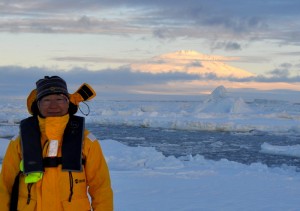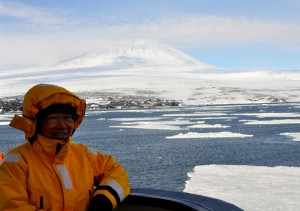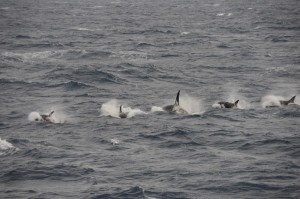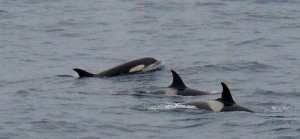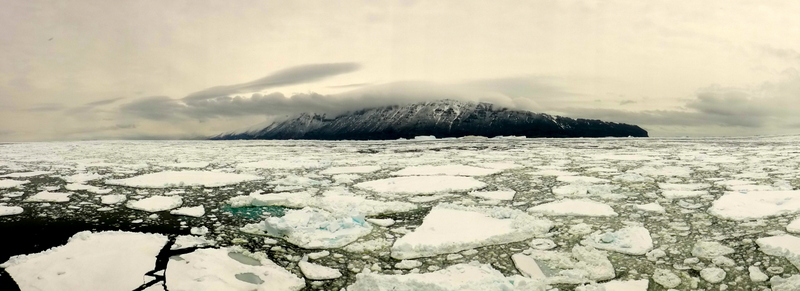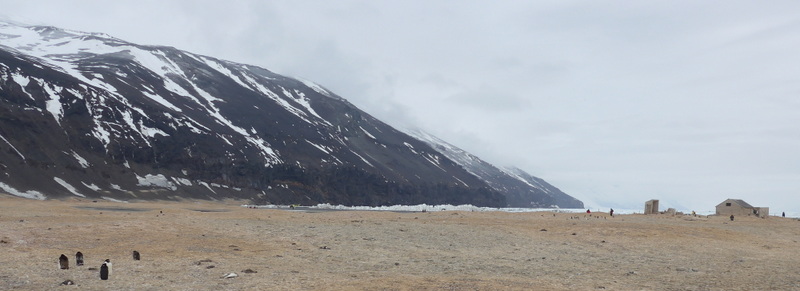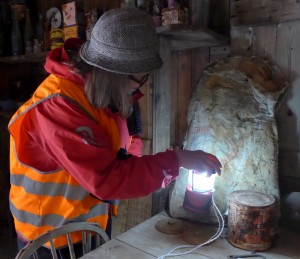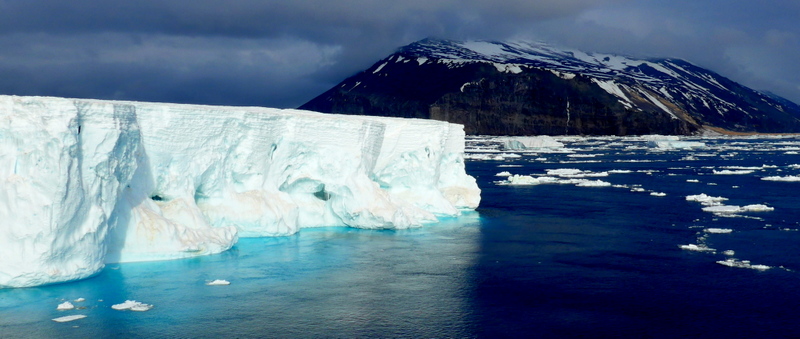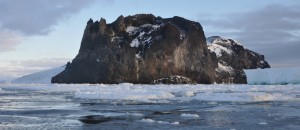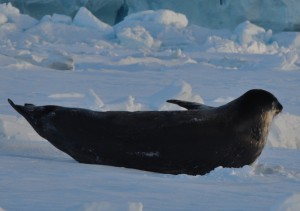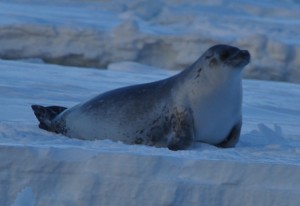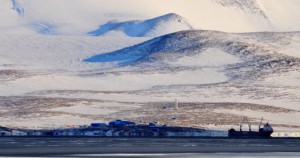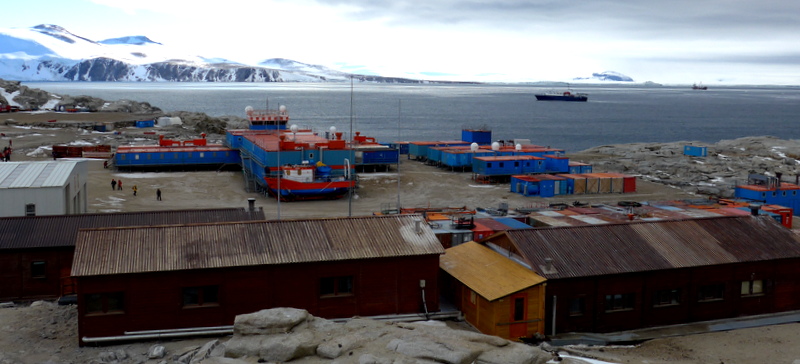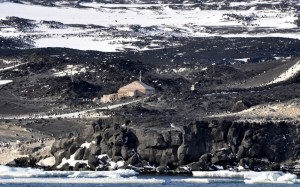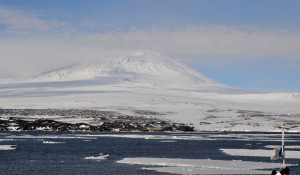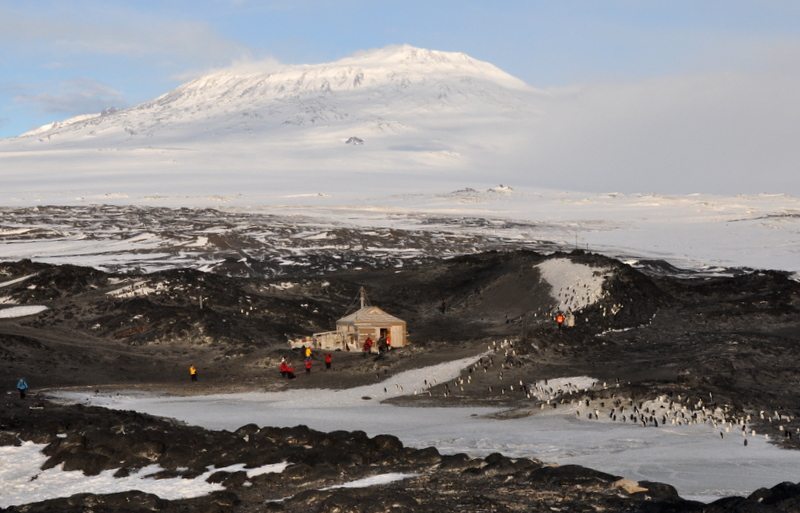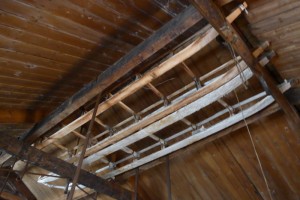February 14-22, 2015 (Day 4 – 12)- Cape Adare, Terra Nova Bay & Shackleton’s Hut
5 Sea-days (February 14-18)
Day 4 (February 14, Saturday, Valentine Day): Southern Ocean- Noon position: 55º 25’S 170º 31’E; Wind W Force 7; Sea state 4; Air 9ºC; 3 lectures
To celebrate the Valentine Day, the boat offers 50% off on a Ross Sea Odyssey t-shirt (Euro(€)13.5). I get one for myself. I also buy a Wi-Fi package with 100mb for €60 and send emails to family and close friends.
The weather is fine but the sea is rolling with rising winds on our approach to the Antarctic Convergence (the body of water before reaching 60ºS and a fairly abrupt boundary between the northward-moving cold Antarctic water and the slightly warmer sub-antarctic water). I spend most of the day in the windowless lecture room.
The morning lecture by Alan provides a timely introduction on sea-birds in the polar region including penguin, skua, petrel, Antarctic tern and albatross. The Southern Ocean is the world epic centre for albatross and petrel. I have seen most of the species during previous polar expeditions.
In the afternoon Jim talks about forces driving weather patterns in these latitudes and how weather has affected early explorations, the climate and currents in the region. Carol begins her history lectures with “Imagining Antarctica”- myths, speculations and wild guesses about the existence, location and nature of the southernmost continent before it was discovered and mapped.
In the evening, I watch my first film on the ship ‘The Exotic Marigold Hotel‘ which has been on my movie. I am a retiree and love India: this film touches me and I can imagine me roaming in India again one day. (L- meat ball and mashed potato; D- loin of lamb)
Day 5 (February 15, Sunday): Southern Ocean- Noon position: 59º 09’S 173º 08’E; Wind W Force 9; Sea state 6; Air 9ºC; 2 lectures- Storm conditions & outer decks closed.
Seasickness has put off many people from taking boat trips. I do not have such problem unless the sea is very rough. Many passengers take preventive medication (a pill, a patch placed behind the ear or a wrist band) for the first few days.
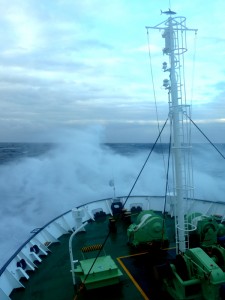 Normally the sea is stormy when entering the Polar Front (also known as the Antarctic Convergence). I get up feeling tired after a sleepless night. I skip breakfast to give my stomach a rest but attend John’s lecture on NZ’s successful attempt to eradicate rats on Campbell Island.
Normally the sea is stormy when entering the Polar Front (also known as the Antarctic Convergence). I get up feeling tired after a sleepless night. I skip breakfast to give my stomach a rest but attend John’s lecture on NZ’s successful attempt to eradicate rats on Campbell Island.
The sea gets very rough by noon. During lunch, the ship is rocking from side to side and I am almost off balance once. Today I climb up the steep staircases with both hands on the rail.
At 3:30pm, Carol continues with the history series talking about James Clark Ross’s expedition from 1891 to 94 when his ships, Erebus and Terror reached the present day Ross Sea and explored part of the Weddell Sea. Thanks to her precise summary, I get a better picture of the places I shall soon be visiting.
Just before 5pm, the boat is hit again by ferocious waves. I rush back to my cabin in time to put away my computer and cameras. During the recap session, the expedition team explained that we had encountered a big storm with 30-50 knot winds and 5-8 m swells coming from the west. As a result the ship has changed course heading east rather than south to avoid having the big swells hit us side on.
After dinner, I watch Part 2 of ‘Frozen Planet‘. I hardly sleep tonight as the ship is rocking. The ‘bang, bang’ noises from the ferocious waves hitting at the bow keep me awake. (L- stir-fry noodle; D- delicious braised lamb shank)
Day 6 (February 16, Monday): Southern Ocean- Noon position: 61º 22’S 175º 55’E; Wind W Force 12; Sea state 7; Air 4ºC; 2 lectures; Storm conditions, outer decks closed.
The ship continues to go east much of today instead of south. Going east would put the big swells on our stern rather than hitting the ship side on. Later today the ship finally turns south with big swells on the bow, some of which are over 10 m. The wind blows at 50 knot or more at times. Ortelius crept along at 4-5 knots most of today, but manages to get up to 8 or 9 knots by evening though still bashing into some big swells. This big storm has unfortunately set us back more than a day.
I feel tired and take a nap after breakfast. I prod along to James’ lecture on the geology of East Antarctica and Ross Sea. The background information enables me to better appreciate what I shall be seeing during this journey.
I sleep again before lunch. The afternoon lecture by Carol on Carsten Borchgrevink who led an expedition on the ship Southern Cross in 1899 is good. His men became the first ever party to winter on the white continent. At 5pm, we have a guest special speaker, Lewis Pugh, who tells us how he abandons his legal career to become a swimmer and champion for environmental protection. He has come to complete his epic swims in seven oceans and to be the first person to swim in the Ross Sea in an attempt to raise world attention to the need to preserve the world’s last pristine continent and to plea for the creation of a marine protected area in Ross Sea.
About a third of the tables in the restaurant is empty as many passengers are seasick. Over dinner, Don announces the sighting of the first iceberg of this voyage around 6pm. I go up to the bridge and find a tiny iceberg on the horizon.
Tonight the film ‘Shawshank Redemption‘ is about an innocent man who spent 19 years in prison for wrongful conviction for murdering his wife and his escape. In the evening, the ship finally entered the calm Southern Ocean (i.e. the water beyond 60ºS) after battling the stormy weather for the last 48 hours. I finally have some decent sleep. (L- beef goulash, D- fried fish filet with rice)
Day 7 (February 17, Tuesday): At sea approaching the Ross Sea-Noon position: 64º 44’S 175º 52’E; Wind NW Force 6; Sea state 4; Air 3ºC; 2 lectures
I wake up feeling on top of the world: the sea is believably calm. I go to the bridge and see an iceberg on the horizon. I cry out with joy: “Wow, we have finally break loose from the storm”. The air temperature between 0º and +1ºC is surprisingly pleasant.
The morning lecture by Dmitri on whales is good. I enjoy his systematic explanations on the biology and habitat of common species found in the Southern Ocean including the blue (the largest), fin (the second largest), humpback, sperm and killer whales.
Just before lunch a pod of four Hourglass Dolphins appears and we all rush out with our cameras. The power, speed and agility of these small dolphins amaze us as they keep up with us, seemingly effortlessly, occasionally leaping clear of the water. They stay with us for 40 minutes. But I fail to take a good photo as they are moving too fast.In the afternoon, Gary talks about different forms of sea ice including growlers, pancake and floes. At 6pm, we gather in the bar and learn with relief that the ship is now making good progress going at 11knots most of the day. Without further mishap, we would be arriving at Cape Adare the following day.
In the evening, I watch a documentary ‘ The Last Ocean‘ which is about a world-wide campaign to ban commercial fishing in the Ross Sea. I am horrified to see fishing boats coming from all over the world for the tooth fish (which is sold as Chilean sea bass) thus destroying the pristine Antarctica waters, the unique ecosystem and food chain that is crucial for the krill, sea birds, fish and marine mammals. Tooth fish which takes 30-50 years to grow in cold waters, has become a popular choice for people from the rich countries who can afford the price. But they can do without it as they are overeaten anyway! For preservation of the planet and in the interest of the future generations, we should preserve the world’s last pristine continent and declare Ross Sea as a marine reserve/protected area.
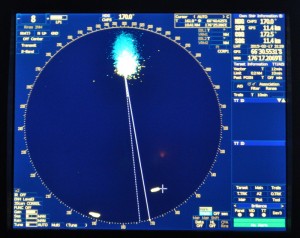 |
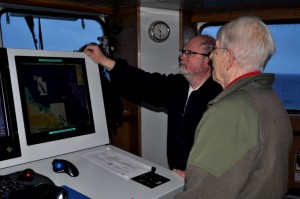 |
While watching the documentary, Don’s announcement of the arrival of orcas / killer whales near the boat brings all of us out to the deck. I stay on in the bridge to watch the ship crossing the Antarctic Circle (66º33‘ S) around 9:50pm. Later in the evening, we gather in the bar to celebrate the crossing with a glass of champagne. (L-stir-fry noodle; dinner-braised lamb shank)
Day 8 (February 18, Wednesday): Southern Ocean- Noon position: 69º 07’S 176º 02’E; Wind ENE Force 8; Sea state 4; Air 0ºC; In pack-ice at times
Today is an exceptional day with fine weather, fantastic scenery with ice and awesome wildlife with whales and birds. Water in the Southern Ocean is bluer, clearer but much colder.
Ice– Around mid-morning, a line of pack-ice appeared on the horizon. Before lunch we are cruising along next to it. We stay in the open water watching small chunks of ice and growlers passing by.
Birds-We encounter the true Antarctic seabirds – South Polar Skua, Antarctic Petrels, Antarctic Fulmars and the pure-white Snow Petrels.
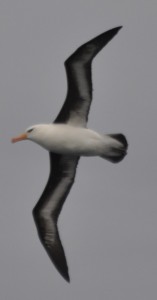 |
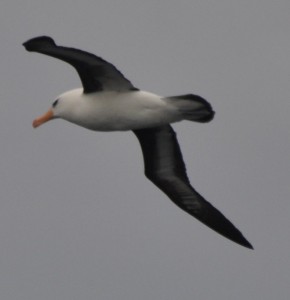 |
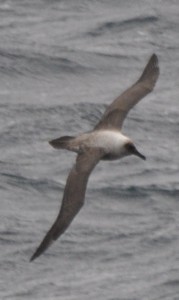 |
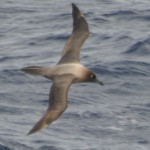 |
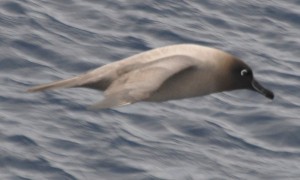 |
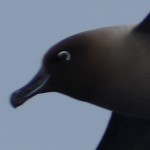 |
Whales-We first see a scattered group of 8-10 Fin Whales. At lunch, a pod of 5 Killer Whales appears and the ship circles slowly while they come close alongside, probably as curious about us as we are about them. Later as we cruise along a wide open channel with ice on either side we encounter. At one time, there are blows from Minke Whales all over the place. Humpbacks – singly and in pairs. We tally well over 20 of these big whales, including a mother and calf. I manage to take my first photo of the tail of a Humpback Whale.
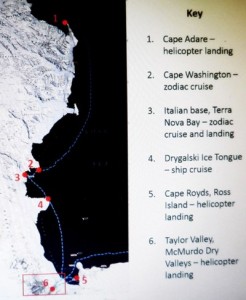 To prepare us for our first landing on the continent by helicopter, we have to attend a compulsory briefing in the morning and to vacuum our clothes and bags. After lunch, I spend most of the afternoon on deck.
To prepare us for our first landing on the continent by helicopter, we have to attend a compulsory briefing in the morning and to vacuum our clothes and bags. After lunch, I spend most of the afternoon on deck.
After dinner, we attend a briefing on the rules on visits to the historic hut of Carsten Borchgrevink and his 9 team-mates at Cape Adare. The Antarctic Heritage Trust based in New Zealand is responsible for restoring, maintaining and protecting the historic explorers’ huts in the Ross Sea. But as the video machine had broken down, John gives us a short briefing and a pamphlet to read. We have an early night as we shall have an early start. (L-buffet; D-fish)
Day 9 (February 19, Thursday), Chinese New Year of the Ram: Cape Adare- Noon position: 71º 16’S 170º 25’E; Wind W Force 3; Air 0ºC; In pack-ice; Second landing
It was gray with overcast when I look out of the bridge at 7am. First snow fall on this voyage! It’s freezing but bearable as long as I am warmly wrapped up.
Cape Adare gradually comes into sight beyond a white sea covered with pack-ice, ice floes and ice bergs of all sizes and shapes. After breakfast, we take part in a drill with full gears on. As the weather and visibility improve, we get more and more excited looking forward to our first landing on Antarctica by helicopter.
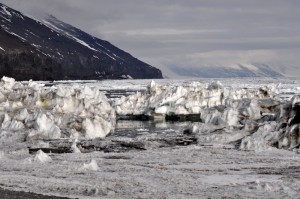 |
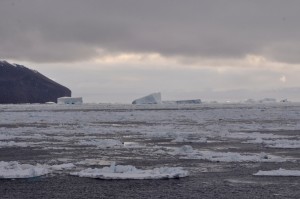 |
We are divided into seven flight groups. After an early lunch, 13 passengers from Group A takes off at 11:30am. I am in Group D and do not leave the ship till 2:45pm. I have a scenic flight over the icy coast before landing at the Ridley Beach.
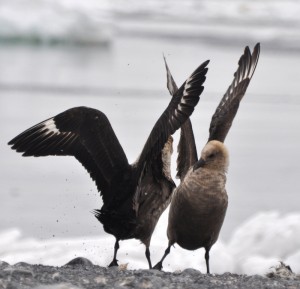 |
The setting is impressive: blue sky, high dark brown volcanic hills with snow at the top behind an expansive beach with pebbles in black and yellow and a couple of pools in pink and green. The sea in front is all white with icebergs and pack-ice.
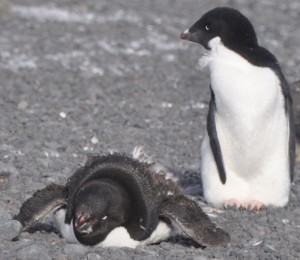 |
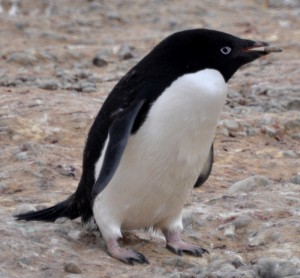 |
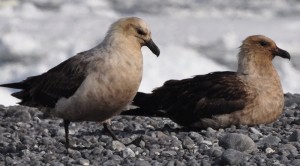 |
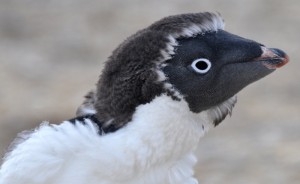 |
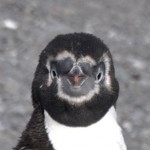 |
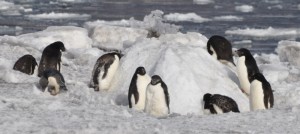 |
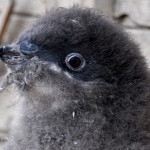 |
Cape Adare is home for 200,000 pairs of Adélie Penguins. But most of them have gone. Only the penguins still molting and some chicks are still around and they look funny! There are also some Southern Giant Skuas which feed on penguin eggs and chicks.
I spend over 20 minutes in Borchgrevink‘s 1898 living hut (5.5m by 6.5m). We have our boots brushed again by John before entering the hut which has ten bunk-beds, stove, table and chairs and other artifacts. Though the hut has been nicely restored, it is not difficult to imagine the harsh and crammed living conditions for the early explorers. Their second hut without roof and door is still in a dilapidated state with only a broken boat lying in the corner. The third hut (6.3m by 6.15m) nearby built by Scott’s Northern Party in 1911 is a ruin in a pathetic state with only a porch still standing.
I fly back to the ship at 5pm and watch Lewis having his first swim off Cape Adare. He stays in the icy water for 10.5 minutes swimming some 500m. We have a BBQ dinner with lovely drumsticks, lamb and sausages. I reckon this is the best and most memorable Chinese New Year celebration in my life! (L-stir-fry beef and rice; D-BBQ)
Day 11(February 21, Saturday): Cape Washington & Terra Nova Bay- Noon position: 74º 42’S 164º 08’E; Wind WSW Force 5-6; Sea ice; Air -5ºC; Second Zodiac Cruise & Third Landing
We had a busy day. Catherine, my French cabin-mate wakes me up around 5am to watch sunrise. The sky is glowing: orange and golden rays radiate through clouds. The snow-topped Mt Melbourne, an active volcano, is beautiful with a pinkish white top!
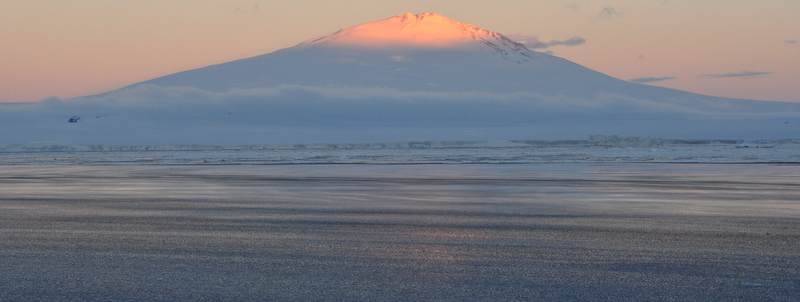 |
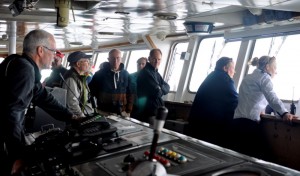 |
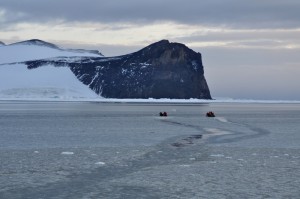 |
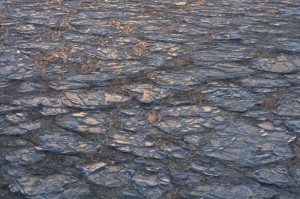 |
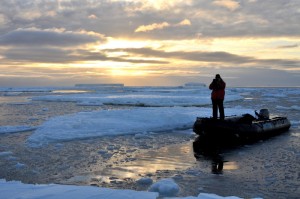 |
The scenery of pack-ice and gigantic bergs at Cape Washington, home of one of the largest Emperor Penguin colonies, is surreal and stunning. Zodiac operation begins shortly after 6am. We had a wonderful cruise for over an hour and a half. I step for the first time on this voyage on a large piece of ice floes and am thrilled to see several Leopard and Weddell seals within close range. We also see three emperor penguins in a distance. It is freezing: my body is warm but my fingers are frozen!
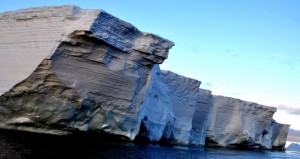 |
|
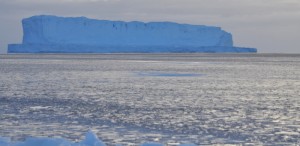 |
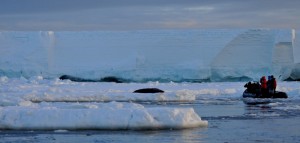 |
After breakfast at 8am, we prepare for our second landing at the Italian base at Terra Nova Bay. The Korean and German research centres are close by and there is a supply ship in the vicinity. Zodiac operation begins at 10:30am. I eagerly put on several layers of clothes and join the queue at the star board side on Level 4 at 10:10am. I should be in the second zodiac. Then we are told to move to the port side. As a result, I have to wait for another half an hour and board the second last zodiac just before 11am. What a waste of time! I am hot and frustrated and think I might faint or have a heart attack at one time.
Instead of cruising in the bay, our zodiac heads straight to the Italian Mario Zucchelli Station. I do not know whether and when to return to the zodiac for a cruise. In the end I spend over an hour walking around the modern but empty base and watch the giant skuas. Apparently, the Italian government for budgetary reasons only has budget for researchers to work in the base in the summer. I wonder why we do not go to the Korean or German centre both of which look impressive and are in operation.
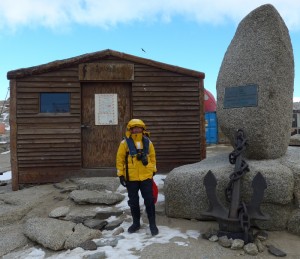 |
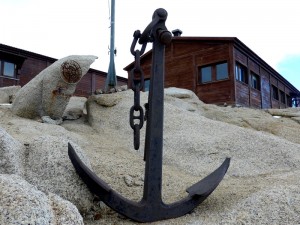 |
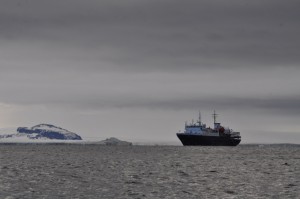 |
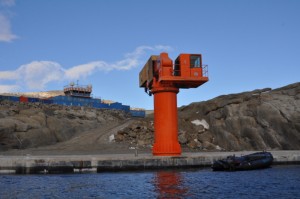 |
I take the second last zodiac back to the ship. Laurie, my cabin-mate, later tells me that there is not much to see on the cruise. I do not mind not having a zodiac cruise at the bay. But I think the information dissemination and zodiac arrangements could be improved.
The afternoon is spent sailing further into the Ross Sea. We track the Drygalski Ice Tongue, which is some 40km-long and 30km-wide. Our progress through the evening is punctuated by bands of pack-ice. I spend most of the afternoon on deck or at the bridge watching the impressive ice tongue! (L- cheese and biscuit (as I do not like pizza); D- turkey)
Day 12 (February 22, Sunday): McMurdo Sound; New Harbour & Cape Royds – Noon position: 77º 32’S 164º 04’E; Wind SE Force 4; Sea state 2; Air -3ºC; Fourth landing
Today’s plan is to visit the Taylor Dry Valley in the morning and Cape Royds, Ross Island in the afternoon. Arriving off Cape Bernacchi, we find a very thick low cloud and the entrance to the valley is barely visible. After waiting a few hours for the clouds to lift, the captain and Don have to give up and decide to cross the McMurdo Sound to visit Cape Royds and Cape Evan first before going back to the Dry Valley the following day.
Though Cape Royds is only 30nm away, the journey takes seven hours owing to pack-ice. As a result, we have a gorgeous afternoon watching icebergs, sea ice, seals and a dozen of Emperor Penguins on ice floes.
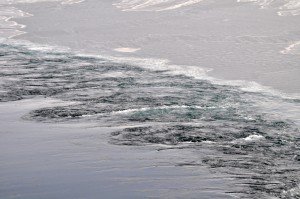 |
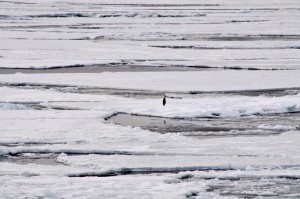 |
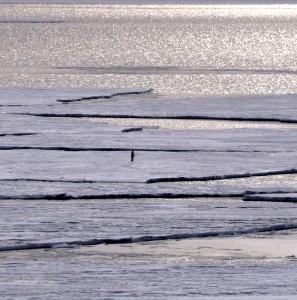 |
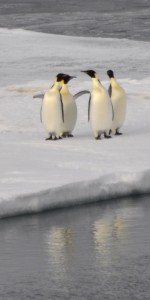 |
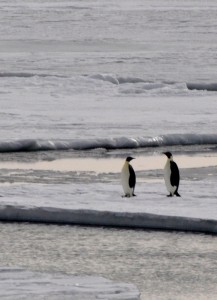 |
The sky clears up as we approach Cape Royds in the afternoon. While sailing along the coast of Ross Island, I can see Mt Erebus (3794m) behind mist and cloud around 4pm. A small orange yacht (the second vessels seen so far) is in the Backdoor Bay. What is it doing here?
As the pack-ice at the bay makes zodiac operation impossible, we have a helicopter landing instead. Our helicopter took off after 7:30pm and we land on black volcanic rocks some 200-300m from Shackleton’s hut. Shackleton is my idol and it means a lot to me to visit the hut! His original plan was to establish a winter base for the 1907-1909 Nimrod Expedition in King Edward VII Land at the eastern end of the Ross Ice Shelf. But the ice shelf had carved into the sea and his team had to head to McMurdo Sound and built their hut at Cape Royds, 32km north of Scott’s hut at Cape Evans. During their stay here, a team climbed Mt Erebus in 1908 while another reached the South Magnetic Pole (which is now at sea – just off the coast of East Antarctica).
Mt Erebus dominates the skyline. The NZ Heritage Trust has done a superb job in restoring this hut: the exterior looks almost new with the timbers bleached and smoothed by the wind. The layout of the hut, the furniture and beds, stove and supply of goods create a warm and amicable feel. Amongst the 5000 artefacts conserved on site, the most legendary ones are the three crates of whisky excavated in 2010.
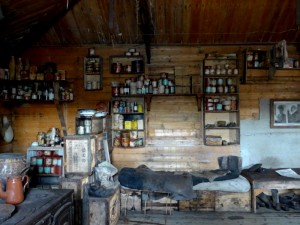 |
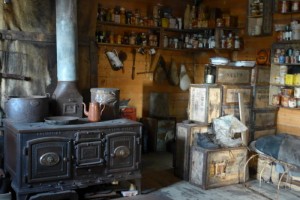 |
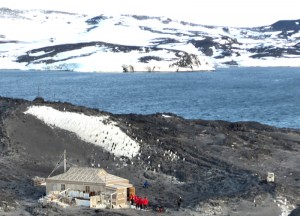 |
It is windy and cold. After visiting the huts, I spend time soaking in the atmosphere listening to the howling winds and watching the moulting funny penguins waddling around the volcanic terrains and ice ponds.
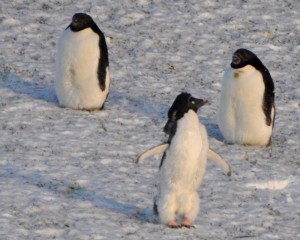 |
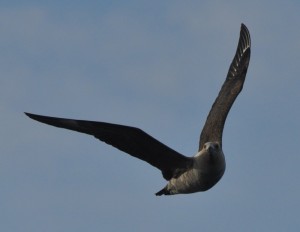 |
It’s a gorgeous day as the sun never sets this time of the year. Before going to bed, I watch the majestic Mt Erebus and the unearthly beautiful Antarctic landscape of white mountain ranges, glaciers, icecaps and sea ice. (L-shepherd pie; D- fish)


